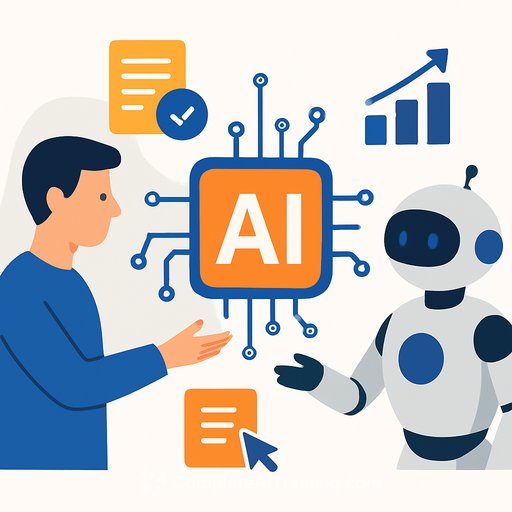The golden opportunity: integrating data and AI to improve government services and renew public trust
Demand is rising. Budgets are tight. Expectations are shifting from periodic reports to immediate answers. Legacy, batch-based systems no longer match how citizens live or how services should operate.
Real-time data and AI can fix this. Automate routine work, elevate human judgment, and act on insight the moment it appears. The result: faster decisions, lower costs, and better outcomes that rebuild trust.
Integrate data, systems and processes
Data locked in silos slows everything down. Separate systems, inconsistent protocols, and limited sharing make it hard to see risk, coordinate responses, or meet needs across services.
Move to real-time integration. Use streaming data, cloud-native analytics, and automation to ingest inputs from case systems, sensors, and third-party feeds. Convert them into actionable insight in seconds, not weeks.
Then push that intelligence straight into operations. Trigger alerts, pre-fill decisions, or initiate services automatically. From eligibility checks to emergency coordination, integrated workflows turn information into timely action.
Change mindsets
Technology alone won't deliver. Leaders must shift from risk-averse, retrospective decisions to proactive, data-led action. Act in the moment, not after the fact.
For example, AI can flag anomalous welfare claims in real time before funds are disbursed. The intent isn't more red tape; it's faster, fairer allocation that protects public resources and helps those who need it most.
Empower teams to make decisions with live data, simplify approvals where appropriate, and redesign processes to remove wait states. Culture follows clarity.
Adopt AI strategically
Use AI where it directly solves operational problems. AI agents can combine historical and live data, apply predictive models and natural language understanding, and trigger responses without waiting for manual oversight.
In emergency response, this means rerouting ambulances based on incident reports, traffic, and weather in near real time. The value is concrete: faster response, better coverage, saved lives.
Decide when to build versus buy. Custom models may fit sensitive policy contexts and data estates. Proven solutions can deliver quicker wins for specific use cases, such as document analysis or tax compliance. Anchor every deployment to a defined outcome, measurable value, and clear governance.
Unlock efficiency, transparency and trust
Real-time visibility into demand, performance, and spending equips leaders to allocate resources with precision. Automated reporting and audit trails improve accountability and reduce administrative load.
Citizens feel the difference when services anticipate needs and respond quickly-whether that's a pre-emptive pothole repair sourced from sensor and citizen reports, or earlier support for a high-risk patient. Responsiveness builds trust.
A strategic shift is underway
This is bigger than a tech refresh. It requires updated data governance, cross-agency collaboration, and new skills. Privacy, bias, and inclusion must be designed in from day one.
Real examples show what's possible. In Jakarta, linking millions of real-time government data points gives citizens a one-stop view of taxes, crime, and air quality-and cuts flood response times from an hour to minutes. In North Carolina, a cloud-based insurance crimes system improved fraud detection and case tracking, recovering millions in months. In one study, every civil servant surveyed reported data and AI improved productivity in tackling irregularities.
The practical playbook for public sector leaders
- Map your highest-friction decisions that need same-day or same-minute answers.
- Inventory your data: where it lives, who owns it, quality, and legal basis for use.
- Stand up a secure integration layer for streaming and batch data with common standards.
- Build a minimum viable pipeline: one source, one model, one automated action, one outcome.
- Set guardrails: DPIAs, model risk management, bias testing, human-in-the-loop by default.
- Upskill teams on data literacy and AI usage; embed product owners in frontline units.
- Measure value weekly: time-to-decision, cost per outcome, false positives, citizen satisfaction.
- Choose build vs. buy on a case-by-case basis; prioritize time-to-value and maintainability.
- Design for interoperability across agencies; use open standards and shared vocabularies.
- Update procurement to allow pilots, success-based milestones, and modular contracting.
Quick wins to prove value in 90 days
- Benefits triage: real-time risk scoring to fast-track low-risk claims and review flagged cases.
- Highways: ingest sensor and citizen reports to auto-generate and prioritize repair tickets.
- Emergency services: dynamic dispatch based on live incidents, traffic, and weather feeds.
- Contact centers: AI assistants that summarize cases, draft responses, and surface next best actions.
Governance that scales
Codify ethical and safe AI practices with recognized frameworks. The NIST AI Risk Management Framework and the UK's Data Ethics Framework are strong starting points.
Operationalize these into checklists, playbooks, and automated checks in your CI/CD pipelines. Make compliance the default, not an afterthought.
The moment to act
The question is not whether your organization can move to real-time intelligence-it's how quickly and decisively you will. Start small, ship value, scale what works.
Integrated data and AI can deliver smarter services, lower costs, and renewed public trust. Citizens won't wait for yesterday's systems to catch up.
Further learning
If your team needs structured upskilling on AI for public service operations, explore curated programs by job role here: Complete AI Training - Courses by Job.
Your membership also unlocks:






